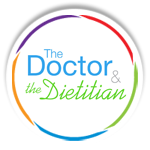Congratulations! You are taking the first step towards improving your health and making some changes that will help keep you active for life!
What will this quiz tell me? Please understand that this multiple choice Hauser Diet Quiz represents tendencies only. It is not an official Diet Type test, nor does it represent or override a recommendation made by the physicians or staff of Caring Medical.
However, this general quiz may help you better understand how certain foods make you feel, in order to get an idea of which diet plan may best suit your physiology. Our body’s response to food can really tell us a lot about ourselves. You may find, however, that you have never really thought about how food makes you feel. You may actually have to think about it and observe yourself for a few days before you can fully answer these questions.
So remember, when you are thinking about your answers to these questions, we want you to think about how these foods make you FEEL, not whether or not you like the food!
For example, many people like pasta, but they feel gassy and tired after their favorite Italian meal. Many people love steak, but they feel constipated and bloated after a big t-bone! So take some time to really think about how you feel – once you figure out what foods make you feel the best, you’re on the road to feeling great all the time! Eating great food makes you feel great!
Thank you for taking the Hauser Diet Quiz! We are calculating your results.
What will this quiz tell me? Please understand that this multiple choice Hauser Diet Quiz represents tendencies only. It is not an official Diet Type test, nor does it represent or override a recommendation made by the health care providers at Caring Medical.
This general test may help you and your health care provider better understand how certain foods make you feel, in order to get an idea of which diet plan may best suit your physiology.
It should in no way be the deciding factor in any diet or healthcare plan. We recommend that you seek the consultation of your health care provider in order to receive a thorough examination and recommendation for a diet plan. If you are receiving Prolotherapy at Caring Medical, your practitioner will be happy to discuss your diet and make recommendations.
Buy The Hauser Diet book at Amazon.com
Welcome LION – Now You Can Eat Like An Animal!®
 Based on the answers you provided in our Hauser Diet Quiz, your diet tendencies match the Lion Diet Type. The Lion Diet Type person is someone whose body gets maximum energy from a diet higher in protein and fat, lower in carbohydrates.
Based on the answers you provided in our Hauser Diet Quiz, your diet tendencies match the Lion Diet Type. The Lion Diet Type person is someone whose body gets maximum energy from a diet higher in protein and fat, lower in carbohydrates.
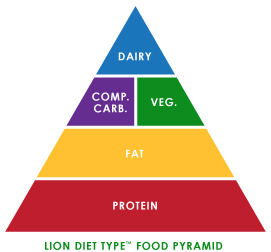
Lion Diet Type Food Pyramid
As you can see in the pyramid, this diet is very carnivorous, meaning a Lion needs a high intake of meats, good fats, and a moderate amount of vegetables. In comparison to a more traditional low fat, high carbohydrate diet, the Lions should refrain from eating these foods such as pasta, rice, fruit, and sugar-containing foods. The Lions food choices include foods such as beef, chicken, fish, eggs, nuts, seeds, vegetables, and an occasional complex carbohydrate such as brown rice, legumes, or whole grain bread.
How Should a Lion Eat?
- A typical breakfast for a Lion would be eggs and bacon rather than cereal and milk.
- A typical Lion lunch might consist of a chicken breast on salad greens, hard boiled egg, chopped black olives, and sliced tomatoes, topped with an olive oil based dressing.
- A typical Lion dinner is something such as a large serving of pot roast beef with a small serving of mixed vegetables, and a small tossed salad with vinegar and oil dressing.
- Snacks throughout the day include protein and fat containing foods such as nuts, organic beef jerky, or hard boiled eggs.
- As you can see here, the Lion Diet does not include desserts or fruit.
 |
 |
 |
How Can I Learn More?
Thank you for taking the Hauser Diet Quiz! We hope that you found it helpful in better understanding how food makes you feel. If you feel that you would like to learn more about the Hauser Diet, you can read more in our book: The Hauser Diet: A Fresh Look at Healthy Living! available at amazon.com.
Additionally, you can read more about the Lion Diet Type here.
We hope that you will find the diet that works best for your optimal health. Please speak with your healthcare practitioner to determine a healthy diet plan for you.
We wish you the best of health!
Sincerely,
Marion Hauser, MS, RD
& Ross Hauser, MD
Welcome OTTER – Now You Can Eat Like An Animal!®
 Based on the answers you provided in our Hauser Diet Quiz, your diet tendencies match the Otter Diet Type. The Otter Diet Type person is someone whose body gets maximum energy from a diet higher in protein and fat, lower in carbohydrates.
Based on the answers you provided in our Hauser Diet Quiz, your diet tendencies match the Otter Diet Type. The Otter Diet Type person is someone whose body gets maximum energy from a diet higher in protein and fat, lower in carbohydrates.
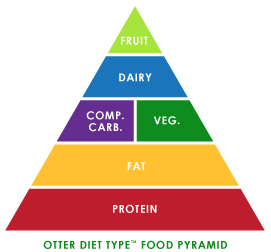
Otter Diet Type Food Pyramid
As you can see in the pyramid, this diet is very carnivorous, meaning an Otter needs a high intake of meats, good fats, and a moderate amount of vegetables and complex carbohydrates. In comparison to a more traditional low fat, high carbohydrate diet, the Otters should refrain from regularly consuming foods such as white pasta, white rice, fruit, and sugar-containing foods. The Otters should regularly choose food such as beef, chicken, fish, eggs, nuts, seeds, and vegetables, with moderate consumption of complex carbohydrates such as brown rice, legumes, or whole grain bread.
How Should an Otter Eat?
- A typical breakfast for an Otter would be eggs with a side of oatmeal topped with nuts, rather than a bagel and fruit juice.
- A typical Otter lunch might consist of tuna salad on lettuce, topped with tomato and avocado slices, along with some raw veggies.
- A typical Otter dinner is something such as a pork chop served with vegetable wild rice pilaf, and a side salad.
- Snacks throughout the day include protein and fat containing foods such as nuts, string cheese, or hard boiled eggs.
- As you can see here, the Otter Diet does not include desserts or sugary foods.
 |
 |
 |
How Can I Learn More?
Thank you for taking the Hauser Diet Quiz! We hope that you found it helpful in better understanding how food makes you feel. If you feel that you would like to learn more about the Hauser Diet, you can read more in our book: The Hauser Diet: A Fresh Look at Healthy Living! available at amazon.com.
Additionally, you can read more about the Otter Diet Type here.
We hope that you will find the diet that works best for your optimal health. Please speak with your healthcare practitioner to determine a healthy diet plan for you.
We wish you the best of health!
Sincerely,
Marion Hauser, MS, RD
& Ross Hauser, MD
Welcome MONKEY – Now You Can Eat Like An Animal!®
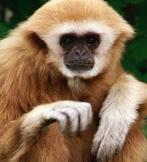 Based on the answers you provided in our Hauser Diet Quiz, your diet tendencies match the Monkey Diet Type. The Monkey Diet Type person is someone whose body gets maximum energy from a diet that is higher in carbohydrates and lower in fats and protein. The Monkey Diet emphasizes foods such as fresh vegetables, fruits, and whole grains, with only minimum allowance for high protein and fat foods.
Based on the answers you provided in our Hauser Diet Quiz, your diet tendencies match the Monkey Diet Type. The Monkey Diet Type person is someone whose body gets maximum energy from a diet that is higher in carbohydrates and lower in fats and protein. The Monkey Diet emphasizes foods such as fresh vegetables, fruits, and whole grains, with only minimum allowance for high protein and fat foods.
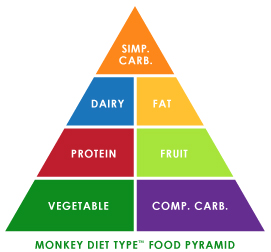
Monkey Diet Type Food Pyramid
As you can see in the pyramid, the Monkey will achieve balance by consuming primarily plant-based foods. Monkeys should eat meals that emphasize vegetables and grains, avoiding high fat meats, excessive amount of oils, and saturated fats. This is more along the lines of a traditional low fat diet. However, the Monkey Diet is does not give you license to freely chow on nutrient-poor foods such as desserts, cookies, sodas, white pasta, and other sugary foods, just because they claim to be low fat.
How Should a Monkey Eat?
Each Monkey meal should contain mostly plant-based foods such as vegetables, whole grains, and some fruit, with moderate amounts of lean protein such as fish, chicken, and tofu. Let’s look at a meal plan for a Monkey.
- A typical breakfast for a Monkey might be oatmeal topped with fresh fruit rather than bacon and eggs (high protein/high fat) or a Belgium waffle with orange juice (high carb/high sugar).
- A typical Monkey lunch would whole grain pasta with marinara sauce and a small side salad.
- A typical Monkey dinner is grilled salmon with green beans and a whole grain roll.
- As far as snacks are concerned, Monkeys should snack on vegetables and fruits, such as raw carrots, celery, and peppers or an apple or pear
 |
 |
 |
How Can I Learn More?
Thank you for taking the Hauser Diet Quiz! We hope that you found it helpful in better understanding how food makes you feel. If you feel that you would like to learn more about the Hauser Diet, you can read more in our book: The Hauser Diet: A Fresh Look at Healthy Living! available at amazon.com.
Additionally, you can read more about the Monkey Diet Type here.
We hope that you will find the diet that works best for your optimal health. Please speak with your healthcare practitioner to determine a healthy diet plan for you.
We wish you the best of health!
Sincerely,
Marion Hauser, MS, RD
& Ross Hauser, MD
Welcome GIRAFFE – Now You Can Eat Like An Animal!®
 Based on the answers you provided in our Hauser Diet Quiz, your diet tendencies match the Giraffe Diet Type. The Giraffe Diet Type person is someone whose body gets maximum energy from a diet that is high in carbohydrates and low in fat and protein. The Giraffe Diet emphasizes foods such as fresh vegetables, fruits, and whole grains, with only no allowance for high protein and fat foods.
Based on the answers you provided in our Hauser Diet Quiz, your diet tendencies match the Giraffe Diet Type. The Giraffe Diet Type person is someone whose body gets maximum energy from a diet that is high in carbohydrates and low in fat and protein. The Giraffe Diet emphasizes foods such as fresh vegetables, fruits, and whole grains, with only no allowance for high protein and fat foods.
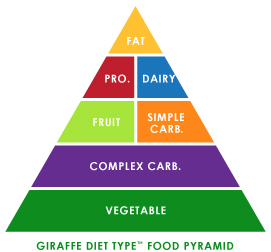
Giraffe Diet Type Food Pyramid
As you can see in the pyramid, the Giraffe will achieve balance by consuming primarily plant-based foods. Giraffes should eat meals that emphasize vegetables, grains, and fruits, avoiding meats, oils, and saturated fats. This is a strict vegetarian diet. However, the Giraffe Diet does not give you the license to eat a ton of plant-based fats such as nuts and avocados as these also contain a lot of fat. Conversely, this diet does not encourage regular intake of sugary, nutrient-poor foods such as desserts, sodas, ice cream, and candies.
How Should a Giraffe Eat?
Each Giraffe meal should contain all plant-based foods such as vegetables, whole grains, and fruit, with minimal amounts of lean protein such as tofu. Let’s look at a meal plan for a Giraffe.
- A typical breakfast for a Giraffe is whole grain toast with jam and a side of melon slices rather than a meat-lover’s omelette with hash browns (high protein/high fat).
- A typical Giraffe lunch is lentil soup and a large salad loaded with vegetables topped with fruit vinaigrette.
- A typical Giraffe dinner might be grilled vegetables skewers over brown rice and a dish of fresh fruit salad.
- As far as snacks are concerned, Giraffes should snack on vegetables and fruits, such as cherry tomatoes, broccoli, an orange, or grapefruit.
 |
 |
 |
How Can I Learn More?
Thank you for taking the Hauser Diet Quiz! We hope that you found it helpful in better understanding how food makes you feel. If you feel that you would like to learn more about the Hauser Diet, you can read more in our book: The Hauser Diet: A Fresh Look at Healthy Living! available at amazon.com.
Additionally, you can read more about the Giraffe Diet Type here.
We hope that you will find the diet that works best for your optimal health. Please speak with your healthcare practitioner to determine a healthy diet plan for you.
We wish you the best of health!
Sincerely,
Marion Hauser, MS, RD
& Ross Hauser, MD
Welcome BEAR – Now You Can Eat Like An Animal!®
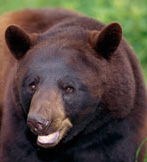 Based on the answers you provided in our Hauser Diet Quiz, your diet tendencies match the Bear Diet Type. The Bear Diet Type person is someone whose body gets maximum energy from a diet well-balanced in protein, fat, and carbohydrates. Hence the Bear Diet emphasizes a variety of fresh food choices.
Based on the answers you provided in our Hauser Diet Quiz, your diet tendencies match the Bear Diet Type. The Bear Diet Type person is someone whose body gets maximum energy from a diet well-balanced in protein, fat, and carbohydrates. Hence the Bear Diet emphasizes a variety of fresh food choices.
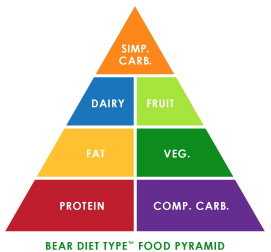
Bear Diet Type Food Pyramid
As you can see in the pyramid, the Bear will achieve balance by consuming moderate amounts of protein, fat, and carbohydrates. Bears should eat meals that emphasize variety and balance, avoiding simple carbohydrates. Bears should refrain from regularly consuming simple carbohydrates such as sugar-containing foods and refined grain products, focusing on a balance of fresh meats, good fats, vegetables, and whole grains.
How Should a Bear Eat?
Each Bear meal should contain some protein, like meat, eggs, or tofu; some fat, like avocado, olive oil, or nuts; and some carbohydrates, such as whole wheat pasta, oats, or legumes. Let’s look at a meal plan for a Bear.
- A typical breakfast for a Bear would be poached eggs on whole grain toast with sliced tomatoes rather than bacon and eggs (high protein/high fat) or a Belgium waffle with orange juice (high carb/high sugar).
- A typical Bear lunch would be a roast turkey sandwich on whole grain bread, loaded with vegetables, small side salad, and an apple.
- A typical Bear dinner is something such as beef-vegetable stir fry with brown rice.
- As far as snacks go, most Bears feel good eating a variety. So Bears may choose a hard boiled egg for a mid-morning snack, and a piece of fruit for an afternoon snack.
- Bears are typically most challenged by keeping portion sizes under control. If you feel good eating a variety of foods, it’s easy to eat a lot of them!
 |
 |
 |
How Can I Learn More?
Thank you for taking the Hauser Diet Quiz! We hope that you found it helpful in better understanding how food makes you feel. If you feel that you would like to learn more about the Hauser Diet, you can read more in our book: The Hauser Diet: A Fresh Look at Healthy Living! available at amazon.com.
Additionally, you can read more about the Bear Diet Type here.
We hope that you will find the diet that works best for your optimal health. Please speak with your healthcare practitioner to determine a healthy diet plan for you.
We wish you the best of health!
Sincerely,
Marion Hauser, MS, RD
& Ross Hauser, MD
